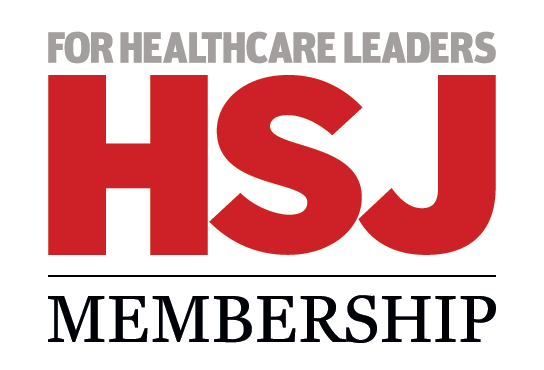Can today’s NHS afford to invest in brand new technology? Or should the question be can it afford not to? Alison Moore reports from an expert debate, in association with Philips, over the challenges of getting innovative kit into hospitals in an age of austerity.
Roundtable participants
- Caroline Clarke, director of finance and deputy chief executive, Royal Free Hospital Foundation Trust
- Gerald Dunstan, strategy director, healthcare and life sciences, KPMG
- Trevor Payne, director of estates and facilities, Barts Healthcare Trust
- Noel Plumridge, consultant, HSJ finance columnist and former finance director
- Nick Rose, head of independent trust financing facility, Department of Health
- Bill Shields, chief financial officer, Imperial Healthcare Trust
- Michael Sobanja, director of policy and former chief officer, NHS Alliance and consultant (roundtable chair)
- Graham Tranter, senior commercial development director, Philips
Getting innovative equipment into hospitals to deliver benefits to patients is always a challenge − perhaps even more so in the current financial climate. HSJ gathered experts to discuss the difficulties in doing this and what can be done to help trusts make the most of opportunities to invest to improve patient outcomes.
‘The most tangible impact is that the hurdles to business cases are getting higher. They are getting more stringent and it is harder to push things through’
Michael Sobanja, who chaired the roundtable debate, said the NHS faced a conundrum of delivering improved outcomes, quality and productivity in financially straitened times: “There are obviously challenges about how to invest upfront when the returns on that investment come down the line,” he said.
But there were also wider issues such as new equipment and innovation demanding changes in clinical practice, and the cumbersome nature of the payment system, which may hamper investment.
Mr Sobanja, a consultant and policy director of the NHS Alliance, asked the panel whether the financial situation was preventing the NHS buying new equipment that could benefit patients.
Gerald Dunstan, from KPMG’s strategic team, replied: “From what I see with clients I work with, the impact that is most tangible is that the hurdles to business cases are getting higher. They are getting more stringent and it is harder to push things through. We are effectively pitting the finance director against the clinical director.”
One difficulty was that the rewards from investment could be some way down the line, he said.
But the picture may not be the same across all trusts, suggested Caroline Clarke, director of finance and deputy chief executive at the Royal Free Hospital Foundation Trust.
“It is probably easier for bigger trusts with a reasonable balance sheet to create headroom,” she said. “We find it easier to get the finance director and commissioners aligned when we have different contractual mechanisms − payment by results does not work for us.” She gave the example of telehealth where her trust had a number of block contracts.
Short-term focus?
Mr Sobanja asked whether the NHS was failing to invest in useful technologies because the financial climate was making it act in a more short term way. He added that there was also an issue of capacity: trusts would struggle to cope with too much investment at once.
But Trevor Payne, director of estates and facilities at Barts Healthcare Trust, felt this depended on local circumstances. “It depends which trust you are in and what position you are in financially. It is all about the business case sometimes - how you present it and how you push it through the system,” he said.
‘The thing that we don’t do very well in the health service is proper benefit evaluation’
But the NHS needed to be fleet of foot when it was dealing with innovations and sometimes had to be prepared to take a calculated risk - something which was not always supported by the mechanisms within the NHS, said Mr Payne.
Consultant, and HSJ columnist, Noel Plumridge pointed to the lack of basic information available that could help - for example, around staff time. He felt there wasn’t a reluctance to invest.
But chief financial officer of Imperial Healthcare Trust Bill Shields had a slightly different perspective. “When I joined Imperial we were spending way more than we could generate,” he said. “A lot of that was about process.”
He found that he could reduce the capital fund without being overwhelmed by a huge number of cases crying out for investment. And he stressed the importance of good business cases which would justify spending.
“When we are talking about what a doctor wants − such as robotic surgery − where the outcomes are similar I’m not convinced that is sensible.
“In terms of investment I don’t see it as a huge barrier if we have clearly articulated business cases and it stacks up.”
But Ms Clarke stressed the importance of understanding the benefits of investment. “The thing that we don’t do very well in the health service is proper benefit evaluation,” she said. But she highlighted some of the issues in this - for example, different surgeons had differing views on robotic surgery which made deciding whether to invest more difficult.
Project evaluation
Mr Shields questioned how many organisations used proper post-project evaluation. Imperial has a standardised process, involving assessment by a committee, which had been prompted by what he described as “a disastrous private patients scheme in terms of cost and over run”.
Philips senior commercial development director Graham Tranter raised the issue of being able to move money around at a time when budgets were restricted. How do we move budgets from surgery to interventional radiology, for example, which might offer an opportunity to reduce bed days and associated costs?
But some parts of the NHS are improving planning around investment.
‘Should everyone be given a chance to use innovative technologies? Will they just compete with each other?’
Ms Clarke said since her trust had gained foundation status it had examined its internal processes. “We had a number of commercial non-executive directors who wanted us to look at a more commercial way of making investments,” she said. “We have put a lot more time and effort into upfront planning. That, I hope, will make a big difference to what we do.”
Several speakers mentioned the “feast or famine” situation NHS staff often found themselves in when it came to investment.
Mr Dunstan said: “The impact of feast and famine is that investment is cultural. There are individuals who have raised their heads above the parapet and you can’t turn that off because it’s famine.” There was a real need for clinicians to see the benefits of investments, he added.
But Mr Shields raised the question of where investment in innovations should take place. Many larger trusts were members of academic health science networks or centres - but should everyone be given a chance to use innovative technologies? Would they just compete with each other?
Importance of networks
Mr Shields pointed to the important role of academic health science centres and networks, both for the NHS and for the economy and economic growth as a whole. “In terms of the economic impact on UK plc, they are a major part. If that does not square with NHS competition then that is tough,” he said.
“I don’t think we are going to get some of the kind of investment that we are talking about in DGHs [district general hospitals] going forward.” Innovation was likely to be around the big teaching hospitals, he said.
‘When we look at applications that come to us we don’t look at return on investment, we look at the ability of the trust to repay the loan’
Ms Clarke said that her trust was part of UCL Partners but a lot of innovations were happening in smaller hospitals. “We are testing out things with large groups of patients and that is where we see the spread,” she said. Mr Payne pointed to some of the difficulties - in a network it might be necessary to convince six or seven boards.
But Nick Rose, head of the independent trust financing facility at the Department of Health, said: “We are seeing a lot of applications coming in from different organisations. You would often see a DGH which is a leader in a particular area where they specialise.
“From my perspective we are seeing investment coming from distric general hospitals but the majority of it coming from teaching hospitals and the specialists. There we have a problem in that, if there is competition in London between different hospital groups, should there be some way of working out if that has created over capacity?”
Mr Shields suggested this was NHS England’s role and that there was a need for strategic direction of some of these issues. Mr Rose said: “When we look at applications that come to us we don’t look at return on investment, we look at the ability of the trust to repay the loan.”
Need for collectivism
Mr Plumridge said that structures had been set up which worked against collectivism − but a collective approach was what was necessary for many DGHs. “But if we turn to the community there is an issue around access to capital.”
‘One of the things I hear from commercial suppliers is a plea for consistency in procurement. There are pleas for some sort of simplicity. Down the line the NHS is paying for this complexity’
Some social enterprises had said they could not invest in the care they wanted and needed partners who did have access to money, he added. “Typically it is the outsourcing companies whom they will be competing with in the next tendering round. These are marriages of convenience,” he said.
But there were also issues around the different approaches that organisations were taking to procurement. “One of the things I hear from commercial suppliers is a plea for consistency in procurement,” Mr Plumridge said. “There are pleas for some sort of simplicity. Down the line the NHS is paying for this complexity.”
Ms Clarke added: “There is a difference between leading the early research-based innovation and then diffusing it. There is definitely a place for a small nimble organisation in future.” And she said that large commercial organisations often seemed to have a nimbleness that she was jealous of. However, payment mechanisms were an issue when it came to getting the whole health economy working together.
Defining value
Mr Sobanja added that strategic relationships were very important and nothing would move forward in some areas of the country unless clinical commissioning groups and their local hospitals had these. But there were important questions around getting “best value” out of what the NHS spends and how that could be achieved.
Ms Clarke suggested value was a mix of cost and quality - and that assessing quality was still an issue in the health service.
But Mr Plumridge suggested there was a deeper question of best value for whom. “Who counts when it comes to value?” With some changes, the costs could in effect be transferred to the patient because it involved more time and effort from them.
‘With increased utilisation, the demand for large equipment could actually reduce quite significantly’
What about seven day working? This would have many ramifications for equipment use and needs in the NHS - but was it being planned for, asked Mr Tranter. “I still see tenders coming towards us from the NHS which define the service required as 9-5. There seems to be a disconnect between procurement and the desire of the NHS to move towards seven day working.”
Mr Plumridge added it was surprising how quiet hospital car parks were on a Friday afternoon.
Mr Shields raised the question of how intensively equipment was already used. Out of a theoretical maximum of 168 hours a week, how many hours were hospitals using major (and expensive) pieces of equipment?
And he pointed out that the one resource which was not flexible was the human resource; equipment used for more hours would still need staff.
Boost utilisation
However, Mr Shields suggested, with increased utilisation the demand for large pieces of equipment could actually reduce quite significantly. A piece of work he had recently been involved in had suggested that better matching resource and demand could save his trust £25m. “When we get these things right then the demand for expensive kit will reduce,” he said.
Mr Tranter said Philips was responding to seven day working - for example, it was now offering a standardised maintenance proposal offering maintenance from 6am to midnight and would shift planned maintenance towards weekends and out of hours.
“We believe Philips Healthcare is making this change to help the NHS improve equipment utilisation,” he said.
Mr Plumridge pointed out that seven day working required the availability of workers to change: “Sweating the assets requires discharging people on a Saturday and Sunday, and that requires physiotherapists to work weekends.”
And he pointed out that, in principle, the payment by results system offered a financial incentive to use equipment for more hours - yet this had not necessarily happened.
‘Sometimes we are baffled when someone comes asking for some money. We are not quite clear whether it is the procurement side of the organisation or the financial side and how the decision has been taken’
Mr Dunstan added: “My sense is that there is a huge amount that can be done with where we are before we start opening the seven day working issue.”
In the trusts where he had worked on operational transformation and improving utilisation there was a long way to go before they would need to buy a large number of “white boxes or open a new wing”.
Mr Tranter added: “We have teams of people who will come and work in the NHS to improve utilisation. It is not just about selling the equipment. It’s about developing both technology and service innovation to improve patient outcomes.”
Mr Dunstan said some device manufacturers were now linking using their equipment to reducing length of stay - which offered potential for a future partnership.
Mr Sobanja said that pharmaceutical companies were some years ahead on this and offered not just a pill but a pathway. There might be a need to treat capital investment in kit differently.
“One of the implications might be for suppliers not only to help the NHS to sweat its capital assets more but also to move from being a kit supplier to helping with a solution of which the kit might be a part,” he said.
Radical approaches
But there is a need for some radical thinking on how equipment is purchased and replaced. “You can get locked into a lifecycle of a bit of kit that comes to an end so you replace it rather than looking at other options,” said Mr Payne.
“Not all organisations do that and do it well. We need to look outside the NHS. This is a fairly standard process approach - the solutions are out there.” This might involve asking whether the NHS should own the equipment in question.
‘We cannot have a situation where employees will have a veto over how they work, when they work and what they work with’
But is there a mismatch between what clinicians want and what gets bought - and what about relationships between those who make the financial decisions and the clinicians? Mr Sobanja said: “Many equipment suppliers will sell their solutions to clinicians. The problem often for them is that clinicians are not making decisions about investments.
“If we are talking about seven day working or changes in technology [such as] trying to get the orthopaedic surgeons to move to a cementless hip, as a result of procurement decisions [this] is very difficult. How do we see that relationship now?”
Mr Shields said: “I don’t think it is where it might be. To take an example with trauma and orthopaedics, a significant number of the people we are talking about also work in the private sector.”
Relationships were different there, he said, and surgeons seemed to sign up to whatever was commonplace. He suggested the NHS needed to move towards a similar situation but this would involve engaging clinicians and had a “hearts and minds element”.
“We cannot have a situation where employees will have a veto over how they work, when they work and what they work with,” he said. “We need to tackle that. But the benefits of that are not as massive as I hoped they would be.”
His trust was now moving to only two suppliers of pacemaker after some difficult conversations in cardiology and the involvement of the medical director. “A key relationship for me is the medical director and the finance director − they need to be joined up.”
One voice
Mr Dunstan also stressed the importance of a medical director and finance director speaking with one voice - including on patient outcomes. Ms Clarke said what was innovative varied from place to place: robotic surgery was seen as innovative in some hospitals but in the US was more commonplace and there was a question whether we needed to scale up to get the benefit of efficiencies.
‘At the end of the day if you are buying a piece of kit you need to go off and consider all the options and that does not seem to happen’
“Don’t expect changes overnight and don’t expect your cost structure to change overnight,” she added. But she suggested there were benefits to be had from different approaches.
“We are trying to consolidate our pathology services with some other hospitals and a commercial provider. We will get investment from another party to do that. That is an example of where we are trying to use technology and a joint venture vehicle to move forward.”
Mr Rose said the DH did not see the decision making process in trusts. “Sometimes we are baffled when someone comes asking for some money. We are not quite clear whether it is the procurement side of the organisation or the financial side and how the decision has been taken.”
Lack of proper processes
Although some work had been done with NHS Supply Chain around buying some items in bulk and getting a discount, sometimes trusts still went down a different route.
‘Very few organisations have got a process in place in terms of equipment replacement’
“At the end of the day if you are buying a piece of kit you need to go off and consider all the options and that does not seem to happen,” Mr Rose said. Sometimes he was approached very late in the process by the financial director who saw a source of cheap funding.
“The teaching hospitals, the major innovators, are all very sharp but when you get down to DGH level it gets less easy to distinguish what is driving it,” he added. In some cases people were simply trying to replace kit without asking whether it was the right thing to do or whether something different was needed.
And Mr Shields added: “I think very few organisations have got a process in place in terms of equipment replacement, whether it is a significant piece of kit or more run of the mill.”
One result of this lack of a process was that organisations were often trying to replace equipment that had not been working for some time and this could lead to hasty decisions.
Mr Rose said he had been approached by organisations where equipment was two years over the planned procurement date and supplies had started to dry up. In some cases, however, there were options where more of the risk could be taken on by the supplier.
Mr Rose also pointed out there was always a need for some excess capacity in case of an emergency - for example if equipment broke down. He highlighted the problem with a lot of Linac accelerators − originally funded with Lottery money − coming up for replacement around the same time. These were significant purchases and sometimes the resources had not been built up to replace large equipment.
Mr Sobanja asked how some of these problems could be addressed - for example, matching costs and income stream and getting rid of some of the risks.
Mr Tranter said: “I think the managed equipment services model has been there for a while. We see increasing enquiries. We are invited into a lot of hospitals to discuss what it would mean and the interest in it is growing.”
Taking time to make decisions
Trusts should look at options and make the right decision − but that could mean the decision takes longer, he said.
Mr Payne stressed the importance of thinking about what was needed in a different way. Some equipment was not needed all of the time - and could sometimes be mobile and purchased in six week slots.
Trusts also needed to think about servicing equipment and whether they needed a “gold plated” service contract which could add considerably to the cost. Mr Rose agreed that it was important to think about the real cost of equipment, including aspects such as servicing.
“If you are a struggling DGH it is going to come down to cost,” he said. This could mean they might look at operating leases although there were residual value issues with this route.
‘In many organisations a lot of money is spent on pet projects without a good business case’
Mr Plumridge wondered whether fears that the extensive cash balances held by FTs might be “raided” would push them towards capital investments. “£4.5bn sitting in balances - it must be tempting for the treasury to say that the NHS never needed that in the first place, let’s have it back,” he said.
But Mr Shields said the financial regime for non-FTs was not that different to that for FTs. “It does not drive us in terms of the investment process. The big issue for me is capital charges.
“I think generally if you have an organisation that is spending significantly more than the depreciation charge in asset replacement… then you are clearly going to have a problem. If you are borrowing to fund that you will have a problem. In Imperial we were spending £60m a year on capital replacement and I don’t know where it went.”
This spend had been cut to £20m without seeing much impact on assets, he said.
Make the business case
And Mr Shields added it was a problem in many organisations that a lot of money was spent on pet projects without a good business case.
‘Surely it would be better for the supplier to have an idea of the pipeline coming through?’
“There are organisations that are not major teaching hospitals in the UK who have CyberKnife [a robotic system for radiotherapy]. We have to seize the question of whether strategically we need that investment.”
Are there lessons from international healthcare systems that are grappling with similar issues?
Mr Shields said the US was a poor model with major over-provision and smaller providers being driven to have major pieces of equipment. But other countries - such as Holland - were good at matching capacity and demand, and at utilisation.
Mr Payne stressed the importance of standardisation in procurement. “Surely it would be better for the supplier to have an idea of the pipeline coming through?” he said, suggesting there might be a need for some form of regional approach.
‘The way commercial companies develop a project is that you start with an initial business case. There are opportunities to kill it. In my experience the NHS is not killing things that are not working’
Mr Dunstan said he had visited a specialist orthopaedic company in Germany which worked in partnership with healthcare providers who saw the relationship as a way to help them improve. This partnership had fundamentally changed some of the key processes in the hospitals.
One outcome of this had been that the outpatients department was redesigned so that patients had an “office” where the doctor came to see them. Many of their queries could be answered by a database of questions they could access on an iPad. Working closely with suppliers in this way would be quite a change for the NHS.
Mr Sobanja asked: if the panellists could change one thing what would it be?
Mr Rose suggested a database of equipment from around the country would be important, to highlight opportunities for shared capacity.
Time to share
Mr Dunstan suggested that sharing business and investment cases across the NHS could encourage best practice - something supported by Mr Shields. “The way commercial companies develop a project is that you start with an initial business case. There are opportunities to kill it. In my experience the NHS is not killing things that are not working,” said Mr Dunstan.
“We need to share rather than keep things within a trust,” suggested Mr Payne. “We need to understand the value of our supply chain and work more strategically with our suppliers.”
Mr Tranter echoed the need to work strategically with suppliers and added that as a result of its global presence, Philips Healthcare was often able to contribute knowledge of best practice from around the world.
Summing up, Mr Sobanja highlighted the emphasis on best value and the importance of strategic relationships, not just between commissioners and providers but also between suppliers and NHS organisations.
Graham Tranter on technology
Given the productivity and challenge facing today’s healthcare system, investment in innovation cannot be ignored if the NHS is to meet the QIPP agenda and look forward to a sustainable future.
In England alone, more than 15 million people live with a long term condition with this predicted to rise by 23 per cent over the next 25 years. Little wonder that the demand for and cost of care is increasing. Trying to resolve pressures on resources should not, however, be achieved by compromising patient care. Looking at innovation in both service delivery and in healthcare technology will support better care and productivity improvement.
Alongside the undoubted issues comes the opportunity to do things differently; to transform the system and create the future of healthcare. So how can Philips help the NHS access meaningful innovation to make a positive difference to the entire care team - clinicians, patients and caregivers?
One way is to respond to the move towards seven day working and its ramifications for equipment use. The provision of a standardised maintenance service from 6am to midnight rather than the traditional 9am to 5pm approach will help improve equipment utilisation with a switch of planned maintenance activities to out of hours and weekends.
The adoption of energy-saving LED lighting and controls is also ideally suited to a 24/7 environment, particularly when you consider that hospitals consume twice as much energy per square metre for lighting as commercial buildings. Moreover, lighting has an impact on people, biologically and emotionally. Innovations such as Philips AmbiScene and Philips HealWell have shown that they can enhance the patients’ experience and promoting wellbeing.
Advances, too, in healthcare technology open up a wealth of opportunities. Treating patients less invasively using image guided interventional therapies as an alternative to surgery may not only help substantially shorten hospital stays but also reduce recovery time and risk for patients.
The potential of remote monitoring in hospitals is also yet to be fully exploited. One such area where this can be applied is within the pressurised intensive care setting. A patient’s condition can be observed around the clock using proprietary clinical software to pick up subtle changes in vital signs. In this way prompt intervention is supported when a patient’s condition deteriorates.
Without doubt, by considering different perspectives, harnessing the opportunities offered by technological innovation and by working together, the many challenges facing hospitals can be addressed - and at the same time ensure that the provision of the highest quality care is upheld.
Graham Tranter is senior commercial development director at Philips

































No comments yet